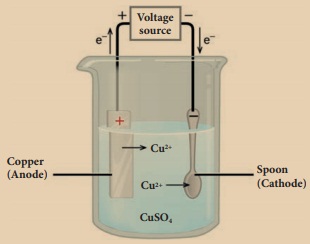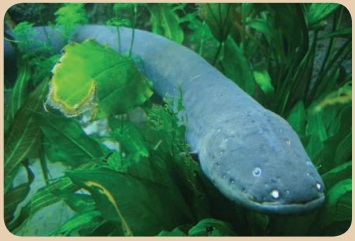Electricity | Chapter 5 | 8th Science - Student Activities | 8th Science : Chapter 5 : Electricity
Chapter: 8th Science : Chapter 5 : Electricity
Student Activities
Activity 1
Take a comb and place it near some pieces of paper. Are they attracted by the comb? No. Now comb your dry hair and place it near them. What do you see? You can see that the paper pieces are attracted by the comb now. How is it possible?

Answer: Comb attracts a bits of paper because Comb is charged object and paper is in neutral so, to be charged one must be in neutral and Comb is negative charged as it gains electrons from hair. Since ,when Comb is placed near to a bits of paper then papers get charged due to induction.
Comb rubbed with hair gains electrons from the hair and becomes negatively charged. These electrons are accumulated on the surface of the comb. When a piece of paper is teared into bits, positive and negative charges are present at the edges of the bits. Negative charges in the comb attract positive charges in the bits. So, the paper bits are moving towards the comb. While combing hair, charges are transferred from the hair to comb due to friction. If the hair is wet, the friction between the hair and the comb reduces which will reduce the number of electrons transferring from hair to comb. Hence, rubbing certain materials with one another can cause the build-up of electrical charges on the surfaces. From this it is clear that charges are transferred by friction.

A neutral object can become positively charged when electrons get transferred to another object; not by receiving extra positive charges.
Activity 2
Take a sheet of paper. Turn it into a hollow cylinder. Tie one end of the cylinder with a silk thread and hang it from a stand. Now take an ebonite rod and charge it by rubbing it with a woollen cloth. Bring this charged ebonite rod near the paper cylinder. The cylinder will be attracted by the rod. If you touch the paper cylinder by the charged rod, you will see the paper cylinder repelling the rod. Can you say the reason?
Answer: When the cylinder is touched by the rod, some negative charges are transferred to the paper. Hence, the negative charges in the rod are repelled by the negative charges in the cylinder.
Activity 3
Bring a negatively charged plastic rod near a neutral rod. When the negatively charged plastic rod is brought close to the neutral rod, the free electrons move away due to repulsion and start piling up at the farther end. The near end becomes positively charged due to deficit of electrons. When the neutural rod is grounded, the negative charges flow to the ground. The positive charges at the near end remain held due to attractive forces and the electrons inside the metal becomes zero. When the rod is removed from the ground, the positive charges continue to be held at the near end. This makes the neutral rod a positively charged rod.

Similarly, when a positively charged rod is brought near an uncharged rod, negatively charged electrons are attracted towards it. As a result there is excess of electrons at nearer end and deficiency of electrons at the farther end. The nearer end of the uncharged rod becomes negatively charged and far end is positively charged.
Activity 4
Rub your foot on a carpet floor and touch a door knob. What do you feel? Do you feel the shock in your hand? Why does this happen?

Answer: Getting a shock from a doorknob after rubbing your foot on a carpet floor, results from discharge. Discharge occurs when electrons onthe hand are quickly pulled to the positively charged doorknob. This movement of electrons,which is felt as a shock, causes the body to lose negative charge.
Activity 5
Take two pieces of wire, an LED light and a battery, and make a simple electric circuit. Take some water in a glass and put the wires in the water as shown in the figure. Does the LED bulb glow? What do you understand from this?

Answer: Yes, the LED bulb glows. From this activity we understood that liquids also conduct electricity.
Activity 6
Take a glass jar and fill it with copper sulphate solution. Take a copper metal plate and connect it to the positive terminal of battery. Connect an iron spoon to the negative terminal of the battery. Now, dip them in the copper sulphate solution. When electric current is passed through the copper sulphate solution, you will find that a thin layer of copper metal is deposited on the iron spoon and an equivalent amount of copper is lost by the copper plate.

Activity 7
Take a battery, a bulb, a switch and few connecting wires. Make an electric circuit as shown in the figure. Keep the switch in the ‘OFF’ position.

Does the bulb glow?
Answer: No, the bulb does not glow.
Now move the electric switch to the ‘ON’ position and let the bulb glow for a minute or so. Touch the bulb now. Do you feel the heat?
Answer: Yes, the bulb is hot because electrical energy is transformed to heat energy. This is known as heating effect of electric current.
If a positively charged glass rod is brought near another glass rod, the rods will move apart as they repel each other. If a positively chargedglass rod is brought close to a negatively charged ebonite rod, the rods will move toward each other as they attract. The force of attraction or repulsion is greater when the charged objects are closer.

The first electroscope developed in 1600 by William Gilbert was called versorium. The versorium was simply a metal needle allowed to pivot freely on a pedestal. The metal would be attracted to charged bodies brought near.
Lightning's extreme heat will vaporize the water inside a tree, creating steam that may burn out the tree.
During lightning and thunder, we should avoid standing in ground or open spaces. You should make yourself as small as possible bysquating. It is however safe to stay inside a car because the car acts as a shield and protects us from the electric field generated by the storm.
The electric eel is a species of fish which can give electric shocks of upto six hundred fifty watts of electricity. But if the eel repeatedlyshocks, its electric organs become completely discharged. Then a person can touch it without being shocked.

Related Topics